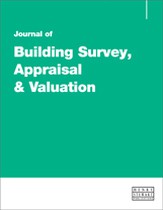The Dilapidations Protocol (almost) one year in
Abstract
Nearly a year on from the Dilapidations Protocol's formal adoption (and followed by the 6th edition of the RICS Dilapidations Guidance Note (GN)), here we reiterate some of the documents’ important/newer features. Both parties to a dispute (not just the landlord) must now provide an endorsement stating that, in their opinion (and having taken full account of the landlord's end of term intentions for the property), the works set out in the schedule are reasonably required and that the costings (if any) are also reasonable. This also reinforces the Protocol's objective to encourage the parties to resolve disputes without redress to the courts. The landlord's claim is now termed the ‘Quantified Demand’ (GN Appendix D suggests a format), which is a complete statement of all the damages that are sought. Before proceedings are issued the landlord's loss must be properly quantified either on the basis of the cost of the works or a diminution (Section 18) valuation — or both (see also GN Section 8). Parties exaggerating/understating their position and other cases involving serious non-compliance can expect the courts to impose heavy cost penalties and/or other sanctions. Deviation from recommended practice should not be considered without very good reason.
The full article is available to subscribers to the journal.
Citation
Woolhouse, Bartle (2013, April 1). The Dilapidations Protocol (almost) one year in. In the Journal of Building Survey, Appraisal & Valuation, Volume 2, Issue 1. https://doi.org/10.69554/COIL6368.Publications LLP
